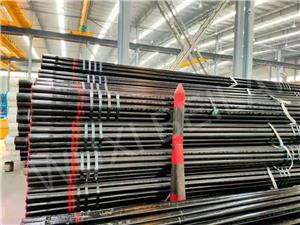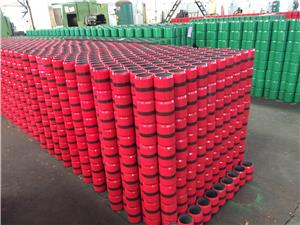Manufacturing technology of oil tube casing
The manufacturing process of oil tube casing is a complex and delicate process, which mainly includes the following key steps:
Raw material preparation
Material selection: Oil tube casing is generally made of carbon steel or low alloy steel, which has good mechanical properties and corrosion resistance and can meet various requirements in the process of oil drilling.
Quality testing: Raw materials need to undergo strict testing before being put into production to ensure that their chemical composition, mechanical properties and other indicators meet relevant standards and requirements.
Pipe processing
Opening and cutting plate: the raw material steel plate is opened and processed, and then the plate is cut according to the required size to obtain the tube blank that meets the requirements.
Cold rolling and heat treatment: The tube billet is processed by cold rolling and other processes to form a preliminary casing tube body. At the same time, heat treatment is carried out as required to improve the mechanical properties and corrosion resistance of the casing.
Threading
Thread processing equipment: Use a dedicated pipe thread lathe for thread processing to ensure that the accuracy and surface roughness of the thread meet the relevant standards.
Processing process: In the processing process, it is necessary to pay close attention to the operation of the machine tool and adjust the cutting parameters and tools in time to ensure the processing quality of the thread.
Spray anticorrosion
Anti-corrosion treatment: In order to extend the service life of oil tube casing and prevent corrosion in harsh environments, it is usually necessary to spray anti-corrosion treatment.
Spraying process: Using advanced spraying equipment and technology, the anti-corrosion coating is evenly sprayed on the casing surface to form a dense anti-corrosion layer.
Other links
Inspection: In the process of processing, the casing also needs to be inspected to find and deal with possible defects and cracks.
Hydrostatic test: hydrostatic test is carried out on the processed casing to check whether its sealing performance and bearing capacity meet the requirements.
Length measurement, weighing and coding: the casing is measured and weighed, and relevant information such as size, steel grade, standard number is printed on its surface.
Finished product inspection and packaging
Finished product inspection: Complete finished product inspection of processed oil tube casing to ensure that its performance indicators meet relevant standards and requirements.
Packing for storage: The qualified oil tube casing will be packaged and stored in the designated warehouse for subsequent use.




